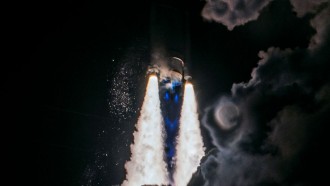
The Apollo 11 mission is probably NASA's most famous and successful project as the spaceflight helped land the first man on the moon.
The event should have called for a celebration as soon as the Apollo 11 came back to Earth--and the whole world did, but the astronauts aboard the spacecraft were forced to isolate themselves for three weeks.
Apollo 11 astronauts was quarantined
Weeks after snagging the title of the "First Man to Walk on the Moon," NASA astronaut Neil Armstrong was not allowed to meet his family, friends, and fans, and he was forced to celebrate his 39th birthday in quarantine.
Being in quarantine is a new experience for most of us, but astronauts are not uncommon. Armstrong did not schedule any birthday party on Aug. 5 of that year as he and his fellow astronauts Michael Collins and Edwin "Buzz" Aldrin went into a 21-day quarantine period, according to ABC 17 News.
Also Read: Scientists Announces Space Warp Drive is Now Possible: NASA Might Apply it for Space Exploration
But why did they need to isolate themselves?
It is because this mission on the moon may have caused them to be exposed to lunar material. There are unknown elements and harmful bacteria in space, which was the first time humans interacted with them.
This means that medical experts wanted to be cautious as they do not want the three astronauts to bring back elements that are unknown to the human body, causing a catastrophe here on Earth.
The doctors closely monitored the three astronauts, and a different team tested and studied the rocks and dust from the moon that was brought back from the mission.
Aside from the unknown elements and harmful bacteria, the experts were careful not to disturb any possible life that the three astronauts may have unknowingly brought back with them when they gathered the lunar samples.
The 21-day quarantine of the astronauts began when the Eagle lunar lander's hatch closed on July 21, 1963, before Armstrong and Aldrin reunited with Collins on the Columbia module that was circulating the moon. The three then began their journey back to Earth, which lasted for three days.
Despite the restrictions, Armstrong's birthday was still celebrated. He was thrown a surprise party and given a cake by the Lunar Receiving Laboratory staff in Houston, Texas, where they spent their quarantine period.
The practice of quarantining astronauts after lunar landings continued for Apollo 12 and Apollo 14 missions.
However, it did not last long for the Apollo program's next missions because as soon as the experts were reassured that there were no dangerous elements in space, they discontinued the practice.
The documentary "Apollo 11: Quarantine" will air on Mar. 6 on CNN and give the viewers a look at how the space program ran in the past and explore the secrets of uncharted territory.
Returning to Earth
NASA scientists' major concern was that the astronauts being contaminated with unwanted bacteria or pathogens from the moon. It was something that the experts wanted to prevent from happening, according to WRAL-TV.
The plans of having astronauts quarantine after their mission began in 1963, with the Interagency Committee on Back Contamination.
According to Brian C. Odom, acting NASA chief historian, the contagion from space was a fear that was very popular at the time due to the public's fear of the unknown.
Quarantining the astronauts after they have returned from a mission and observing them see if they have any health issues was seen as the best way to handle unknown variables.
Luckily, scientists and experts know more now, and quarantining astronauts is no longer required because of modern technology and growing knowledge.
Related Article: NASA Offers $500K for Discovery of Best 'Easy-to-Prep' Space Food Technoology to Feed Astronauts in Deep Space
This article is owned by Tech Times
Written by Sieeka Khan








